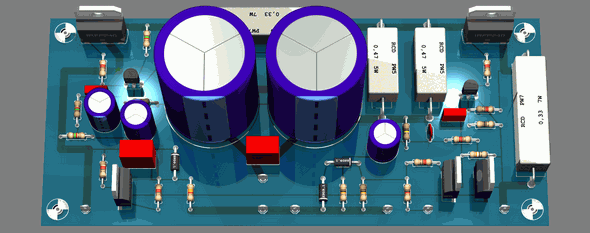Having tried many of the Mains Detectors on the market, to find they are not sensitive enough, this project was designed with a number of improvements. The output is a buzzer, rather than a LED to give a very good indication of the level of electromagnetic radiation. The buzzer has an internal coil and transistor, to produce a self-contained oscillator. It just needs DC to activate. It is not a piezo diaphragm and has NO piezo element inside the case. It is a metal diaphragm.
A MAINS TRACER is essential when trying to find a cable.
It works on cables in ceilings and walls. It will chirp when the light-switch is turned-on and pick up the AC in a power cable. When the probe is near electromagnetic radiation, the buzzer reacts and this allows you to accurately detect the location of the cable.
You can also detect the enormous amount of activity around a computer (mainly the keyboard) and this may account for the common occurrence of headaches.
You can also check for activity around the head of a bed to see if electrical wiring in the wall is influencing your night-sleep.
It will detect signals up to 30cm and is the most sensitive detector of all those tested.
CONSTRUCTION
All the parts fit neatly on the PC board.
The IC fits into a socket with the cut-out shown on the overlay.
The placement of the transistor is also shown.
The buzzer must be connected with the positive on the buzzer going to the hole with the "+" sign. The diode must be fitted with the line on the body down the correct hole and the LED has a shorter lead (cathode) down the hole marked with the arrow-head on the symbol.
The most crucial item to connect is the battery snap. The "cup" on a 9v battery is the negative, but we are making a RECEIVING snap, and the "cup" is the positive. You must look at the diagram to see how this is connected.
Here is the way to place 17 x 10Meg surface mount resistors on the board:
Start at one end of the board and place a resistor. "Butt-joint" the next resistor to it so that as many resistors as possible can be placed along the board. We are aiming for 200Meg or as near as possible.
The value of this resistor is very important as the input impedance of the chip is very high and anything less than 100M will load the input and reduce the sensitivity of the probe.
The 470R resistor for the LED can be increased to 1k as we are supplying a high brightness LED in the kit.
MODIFICATION-2 VERY HIGH SENSITIVITY
The completed project with the mods to make it VERY SENSITIVE
This is done by adding a 10M resistor into the resistor on the front end to provide about half-rail-voltage to the input.
This will mean the input only has to rise and fall a few volts to change the state of the gate.
The "set" does not turn the buzzer on, but when the probe is placed in an area of electromagnetic interference, only a small amplitude signal is needed to alter the tone from the buzzer.
The probe will detect interference from the keyboard of a lap top at 20 cm and household wiring at more than 30cm.
You can check the radiation from the screen of your TV and from the "Smart Meter."
MAINS TRACER - CIRCUIT-2The following circuit shows how to produce a high input impedance using a transistor in emitter-follower mode.
It produces the same high impedance as the circuit above, without having to use the string of 10M resistors.
The only problem is the circuit is not biased to create the super-sensitivity of the circuit above.
You have a choice of building either circuit.
Both PC boards are included in the kit with all the components. You can decide which board you wish to populate.


Không có nhận xét nào:
Đăng nhận xét